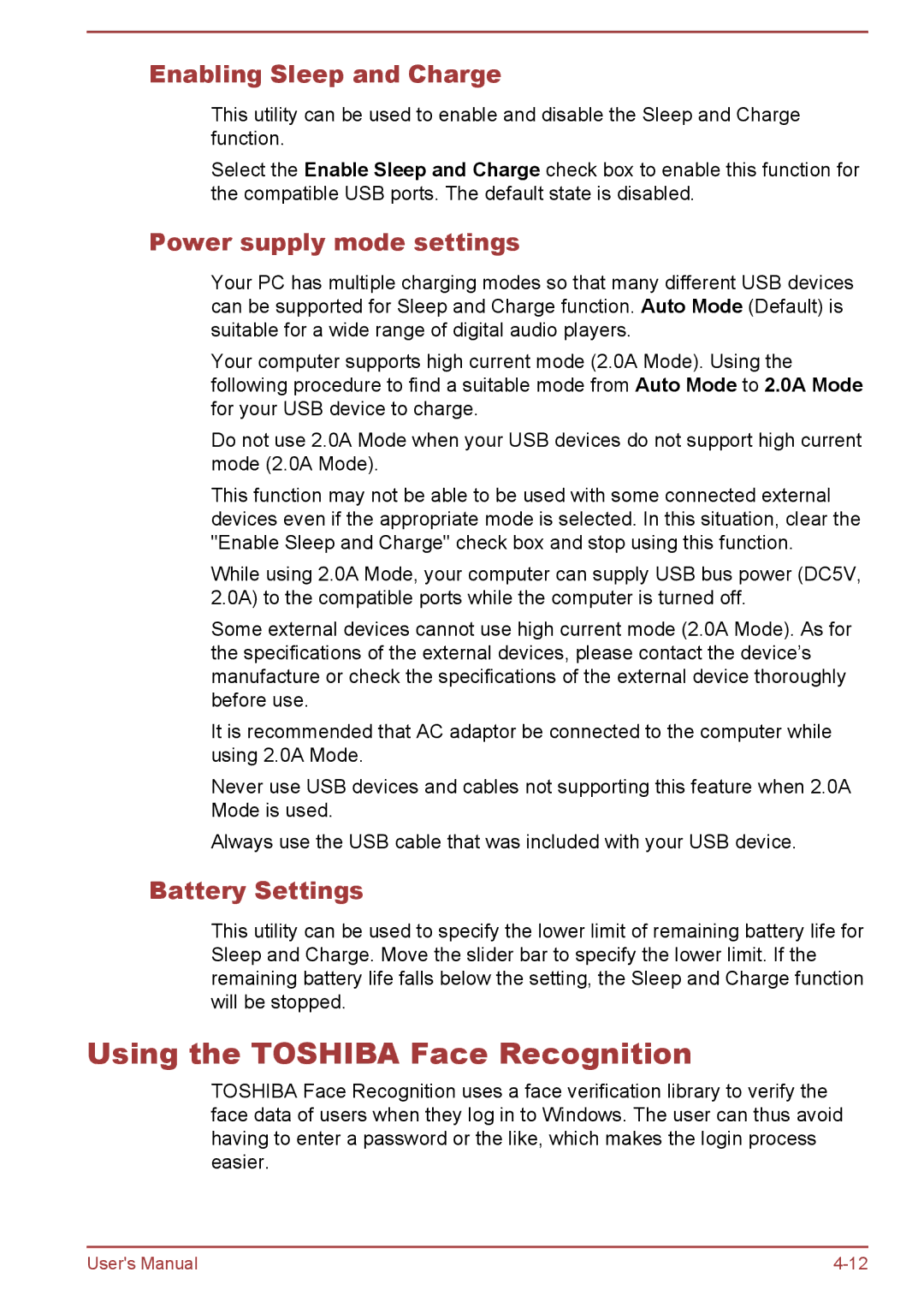
Enabling Sleep and Charge
This utility can be used to enable and disable the Sleep and Charge function.
Select the Enable Sleep and Charge check box to enable this function for the compatible USB ports. The default state is disabled.
Power supply mode settings
Your PC has multiple charging modes so that many different USB devices can be supported for Sleep and Charge function. Auto Mode (Default) is suitable for a wide range of digital audio players.
Your computer supports high current mode (2.0A Mode). Using the following procedure to find a suitable mode from Auto Mode to 2.0A Mode for your USB device to charge.
Do not use 2.0A Mode when your USB devices do not support high current mode (2.0A Mode).
This function may not be able to be used with some connected external devices even if the appropriate mode is selected. In this situation, clear the "Enable Sleep and Charge" check box and stop using this function.
While using 2.0A Mode, your computer can supply USB bus power (DC5V, 2.0A) to the compatible ports while the computer is turned off.
Some external devices cannot use high current mode (2.0A Mode). As for the specifications of the external devices, please contact the device’s manufacture or check the specifications of the external device thoroughly before use.
It is recommended that AC adaptor be connected to the computer while using 2.0A Mode.
Never use USB devices and cables not supporting this feature when 2.0A Mode is used.
Always use the USB cable that was included with your USB device.
Battery Settings
This utility can be used to specify the lower limit of remaining battery life for Sleep and Charge. Move the slider bar to specify the lower limit. If the remaining battery life falls below the setting, the Sleep and Charge function will be stopped.
Using the TOSHIBA Face Recognition
TOSHIBA Face Recognition uses a face verification library to verify the face data of users when they log in to Windows. The user can thus avoid having to enter a password or the like, which makes the login process easier.
User's Manual |
